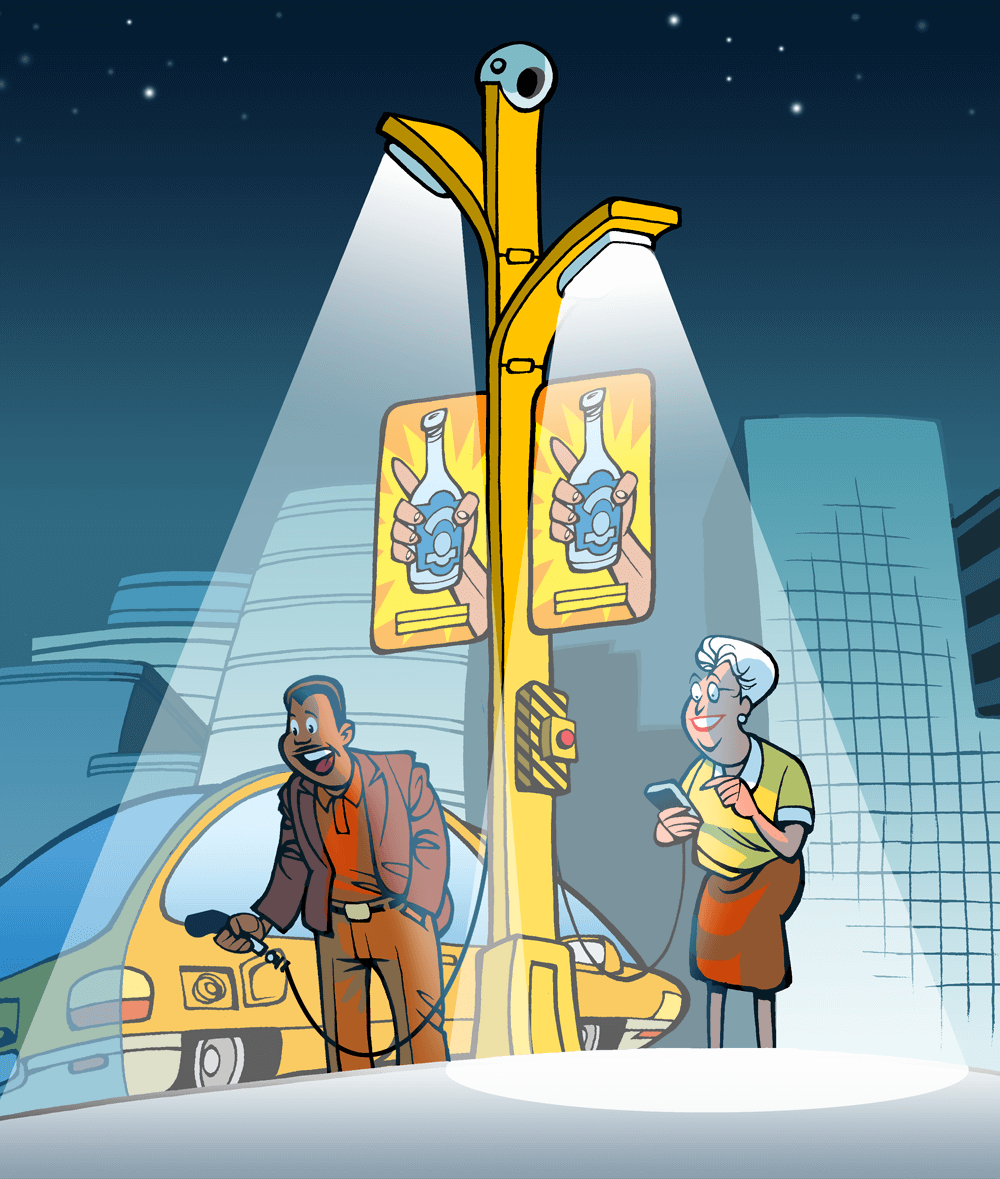Street Lights: Not Just for Lighting Anymore

In the city of the future, could street lights help meteorologists forecast the weather? Could they identify open parking spaces for drivers circling the neighborhood? Quite possibly, according to an EPRI study on “smart city” lighting.
A growing number of commercially available technologies can be mounted on or in street poles and street lights to provide new city services, data streams, and revenue. Potential applications and opportunities include:
- Environmental sensors: The data could potentially be sold to weather providers, emergency services, and other parties.
- Communication networks: Antennas and routers could expand cellular and WiFi networks.
- Grid services: These include electricity metering, fault detection, and distribution automation.
- Cameras and microphones: Audio and video data could be used for security, accident reporting, and parking optimization.
- Charging: Electricity is already delivered to street lights and could be routed to electric vehicle chargers or inductive chargers for drones (used for city and safety services).
- LED billboards: These could be used for advertising.
Other examples include traffic monitoring, gunshot detection, and air quality monitoring. Utilities could potentially invest in a single communication infrastructure that integrates street lights, smart meters, and many other smart city technologies. Questions about these technologies remain, and EPRI is examining their deployment, technical requirements, performance, payback, costs, and benefits.
Artwork by Kirk Anderson

